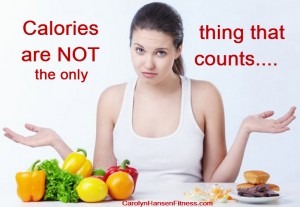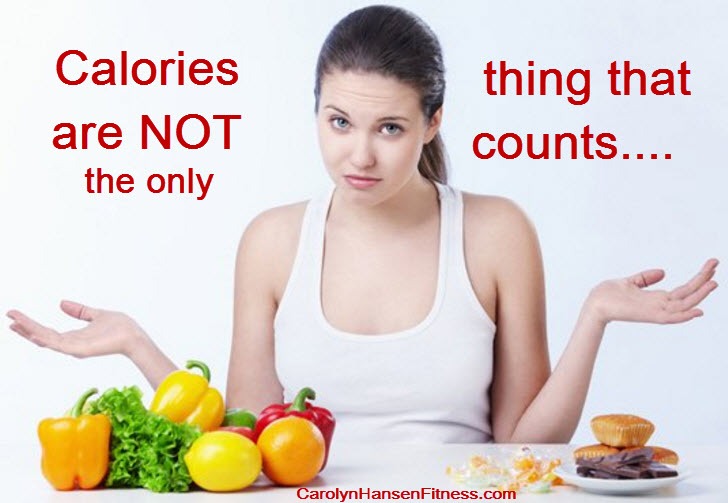 Calories are not created equal and different foods have differing effects on and in your body.
Calories are not created equal and different foods have differing effects on and in your body.
Every single bite of food you consume, contains more than calories…it contains information/instructions to either create health in your body or disease. Some calories are addicting, some fattening, some metabolism-boosting and others heal.
Satiety is how foods are measured for their ability to reduce hunger, increase the feeling of being full and allow for the reduction of energy intake for a few hours.
Eating foods that are low on this index will cause you to be hungrier so you end up eating more. On the other hand, foods that are high in the satiety index will keep you feeling fuller longer so you end up eating less and losing weight.
It’s no surprise that processed foods and those laden with white sugar and white flour rank low on the satiety list – examples of such foods are cakes, cookies, and donuts. Fresh fruits and veggies, eggs and beans are examples of foods that rank high on the satiety index.
Protein calories are less fattening than calories that carbs and fat provide because protein takes a lot more energy to metabolize and keeps us feeling fuller longer. Studies have shown that high protein diets can actually boost metabolism by 80-100 calories daily when compared to diets that are lower in protein.
Another index that needs consideration is the thermal effect of macronutrients. The thermal effect is a measure of how different foods increase energy expenditure because of the energy each one requires to digest, absorb and metabolize nutrients.
If we check out the thermal effect of protein against fat, protein wins out at 25% while fat comes in at 2%. This amounts to 100 calories of protein ending up as 75 calories while the same 100 calories of fat ends up at 98 calories.
In other words, high protein diets have a distinct metabolic advantage. Low carb diets that generally include lots of protein consistently lead to more weight loss than low-fat diets.
One thing that all experts agree upon is that refined carbs are bad for you. These include sugars like sucrose and high fructose corn syrup (the real bad guy, but this does not include the fructose in fruits as they also offer fiber, water and require significant chewing which eliminates the negative effects of fructose) as well as white bread and other refined grain products.
Refined carbs are usually low in fiber and get digested and absorbed quickly which in turn lead to a rapid spike in blood sugar. Once our blood sugar is spiked quickly, it ends up leading to a “blood sugar” crash a few hours later. This “crash” has us reaching for more high-carb snacks and treats. In the end, it turns into a “roller coaster” of blood sugar spikes and crashes. This activity also messes with your hormonal responses and kicks bad biochemistry into gear.
Bottom line is this: calorie sources (from the foods you consume) have vastly different effects on hormones, energy expenditure and hunger. For most people, simply changing their food selections to those that work towards healing and health leads to better results than counting and restricting calories.
Truth is, its never been about the amount of calories going in but about the amount of nutrients consumed.
Most veggies can be used with great success in desserts and treats and can be key to getting the required daily requirements of nutrients that your body needs.
If you are ready to expand beyond your traditional recipes and perception of how veggies should be used you will love my newest creation…“Blended Bites.


